Strong shoulders are not only aesthetically pleasing but also play a pivotal role in maintaining overall upper body function and stability. The shoulder joint is one of the most complex and versatile joints in the human body, allowing for a wide range of movements, from reaching overhead to pushing and pulling. Therefore, comprehending the significance of having robust shoulders goes beyond just appearance; it is about enhancing your physical capabilities, preventing injuries, and ensuring a better quality of life.
From lifting a heavy bag to reaching for items on high shelves, your shoulders are involved in numerous functional movements. Well-developed shoulder muscles provide the necessary strength and stability to carry out these actions efficiently.
When embarking on a journey to develop strong and sculpted shoulders, it’s essential to start with the basics. A solid foundation in shoulder training will not only help you avoid injuries but also pave the way for optimal muscle growth and functional strength. Here, we’ll delve into the key aspects of shoulder training basics.
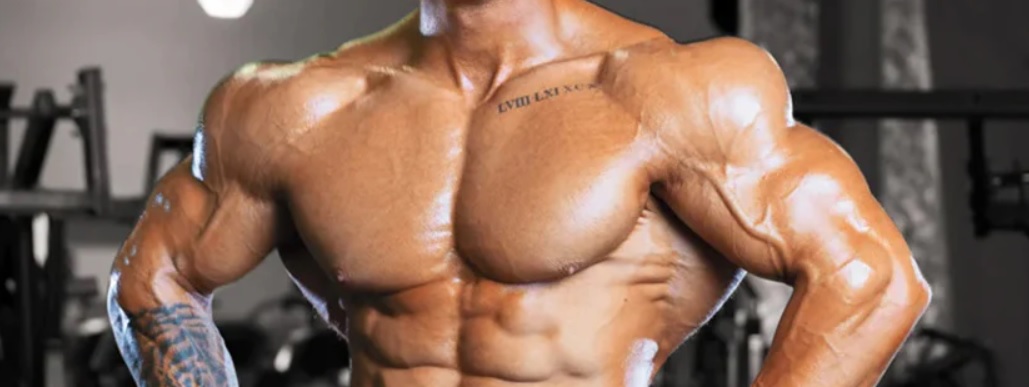
Warm-Up and Mobility Exercises
- Begin with 5-10 minutes of low-impact cardiovascular exercise, such as brisk walking, cycling, or light jogging.
- This elevates your heart rate and increases blood flow, priming your body for more intense activity.
Dynamic Shoulder Mobility Drills
- These movements help lubricate the shoulder joint, reduce stiffness, and improve your range of motion.
- Examples include arm circles, shoulder dislocations with a resistance band, and scapular wall slides.
Light Weight Activation
- To further activate the shoulder muscles, use light dumbbells or resistance bands for a few sets of rotator cuff exercises.
- Internal and external rotations help wake up the rotator cuff muscles, enhancing shoulder stability.
Stretching
- Incorporate static stretching for the chest, upper back, and shoulders.
- Hold each stretch for 15-30 seconds to alleviate muscle tightness and enhance flexibility.
Foam Rolling
- Consider using a foam roller to release tension in the upper back and shoulders.
- Rolling over tight spots can relieve knots and improve muscle function.
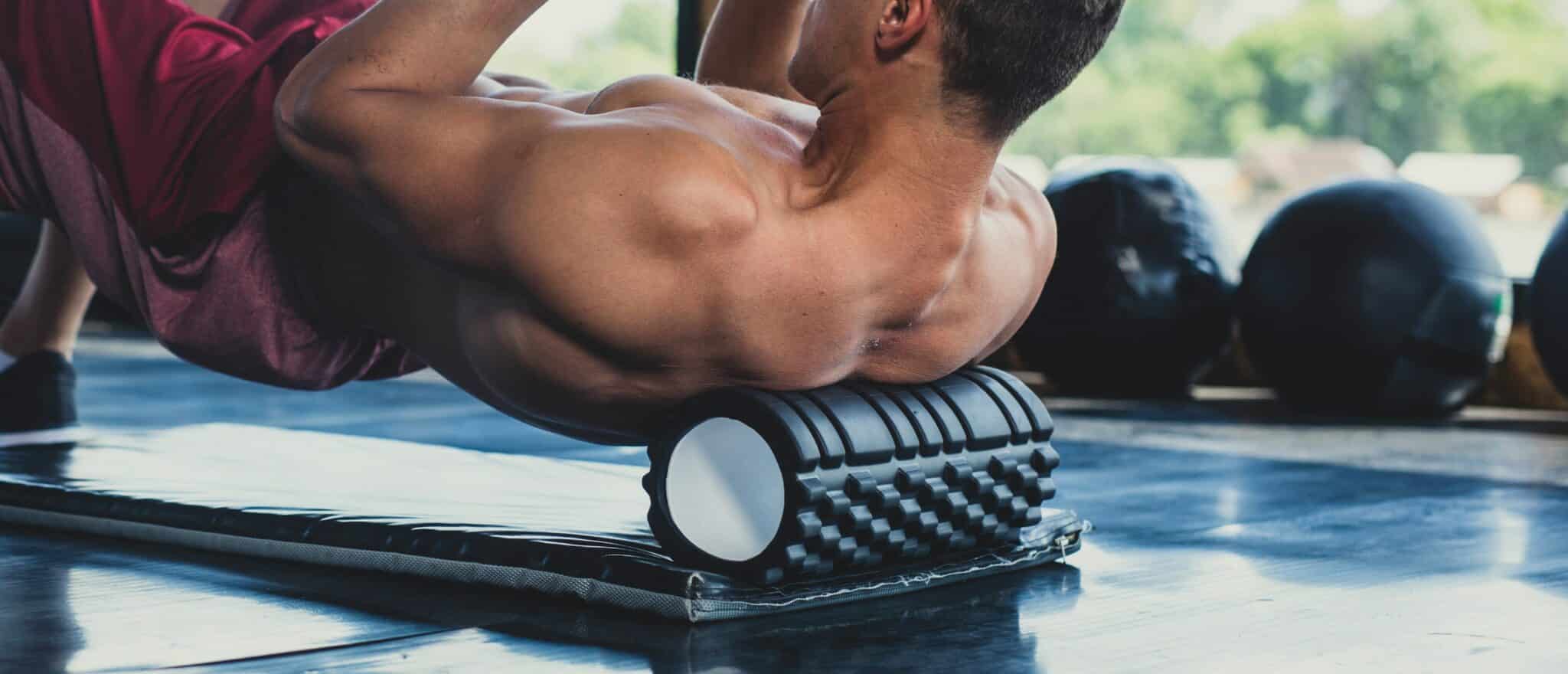
How to Train the Biceps
- Training the brachialis is crucial for achieving growth. To develop the muscles, it is essential to hit the long and short heads equally, which are often neglected.
- The cross-body hammer curl is often used to limit the involvement of the biceps brachii, but studies have shown that a pronated grip can limit the involvement of the long and short heads.
- This is because the biceps brachii, long and short heads, inserted the radial tuberosity and the forearm bone on the thumb side. However, this doesn’t mean that you should perform reverse grip concentration curls, as it may make you look creepy.
- Another study found that a pronated grip can lengthen the brachii at the distal end, preventing contractions.
- To achieve hypertrophy, you need to hit the threshold of around 10 sets, but this depends on your specific training method and the specific muscle you want to target.
- To achieve a wider bicep, it is recommended to train for 10 sets for the long head, short head, and brachialis.
- However, this may not be enough for everyone, as there is a lot of overlap between muscles.
- Start with a unilateral cable curl to control the external rotation of your shoulder and drive contraction into the short head.
- For the brachialis, use a straight bar and do a 45-degree angle drag, reverse grip curl, and drag curl.
- For the long head brachialis, start by hitting the brachialis first with a reverse grip straight bar curl and lean back to drive tension to the lateral side.
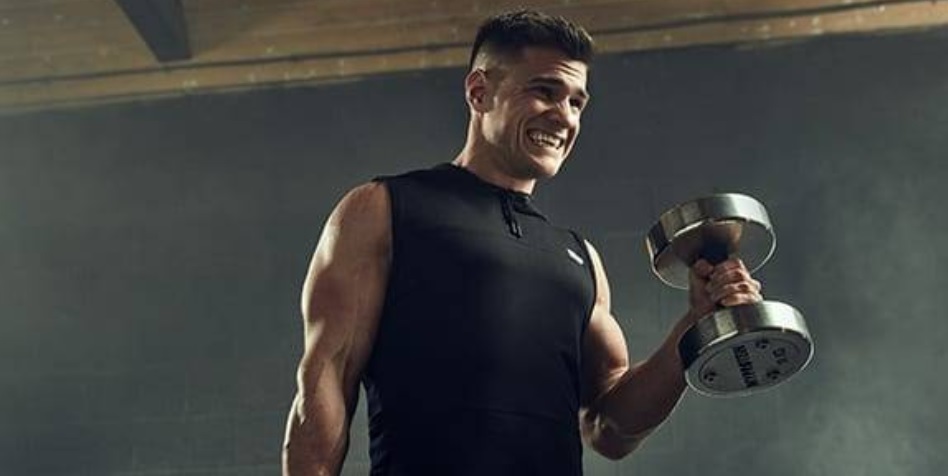
Selecting the Right Shoulder Exercises
Choosing the appropriate shoulder exercises is a crucial step in your shoulder training journey. The goal is to target all three heads of the deltoids (front, side, and rear) while also engaging the surrounding muscles for stability and support.
- Compound Movements: Start with compound exercises that recruit multiple muscle groups. The shoulder press, whether with a barbell or dumbbell, is a classic compound exercise that targets all three deltoid heads and engages the triceps and upper chest. Additionally, push-ups and their variations work well for overall shoulder development.
- Isolation Movements: Incorporate isolation exercises to fine-tune specific areas of the shoulders. Lateral raises target the side deltoids, while front raises emphasize the front deltoids. Rear delt flyes or face pulls are excellent for the rear deltoids. These exercises help create a balanced, well-rounded shoulder appearance.
- Rotator Cuff Strengthening: Don’t forget about the rotator cuff muscles. Exercises like external and internal rotations with resistance bands or light dumbbells should be included to maintain shoulder joint health and stability.
- Variation and Progression: Periodically change your exercises and workout routine to prevent plateaus and continually challenge your shoulder muscles. This can involve altering the angle, grip, or equipment used. Progressively increase the weight and intensity to promote muscle growth.
- Proper Form: Pay close attention to your form and technique. Using improper form, especially with heavy weights, can lead to injuries. Maintain a neutral spine, engage your core, and control the weights throughout the range of motion.
Setting Your Shoulder Training Goals
Effective shoulder training begins with clear, achievable goals. These goals provide direction to your workouts and help you stay motivated and focused on your progress.
- Strength Goals: If your primary aim is to build shoulder strength, focus on compound movements like the shoulder press and prioritize progressive overload. Set specific weight and rep targets to track your strength gains over time.
- Hypertrophy (Muscle Growth) Goals: To develop larger, more defined shoulders, and incorporate a mix of compound and isolation exercises. Target different areas of the deltoids through varied exercises and rep ranges. Monitor your nutrition to support muscle growth.
- Functional Fitness Goals: If your focus is on enhancing shoulder function for activities like sports or everyday tasks, emphasize exercises that improve shoulder stability and mobility.
- Injury Prevention Goals: If you’ve had previous shoulder injuries or want to prevent them, prioritize rotator cuff exercises and shoulder mobility work. A balanced training program can help strengthen the joint and surrounding muscles, reducing injury risk.
- Aesthetic Goals: For those aiming for a visually pleasing shoulder appearance, concentrate on isolation exercises to sculpt each deltoid head. Maintain a balanced workout regimen to avoid overdeveloping one area at the expense of another.
- Time and Consistency Goals: Consistency is key to achieving any fitness goal. Set goals related to how often you’ll train your shoulders each week and track your workout frequency to ensure you stay on track.
Dumbbell Exercises for Shoulders
Dumbbell exercises are a versatile and effective way to target your shoulder muscles. They allow for a wide range of motion and can help improve shoulder stability and strength. Let’s explore various dumbbell exercises specifically designed to work your shoulders.
Variations of the Shoulder Press
- The shoulder press, also known as the overhead press, is a fundamental exercise for developing overall shoulder strength and mass.
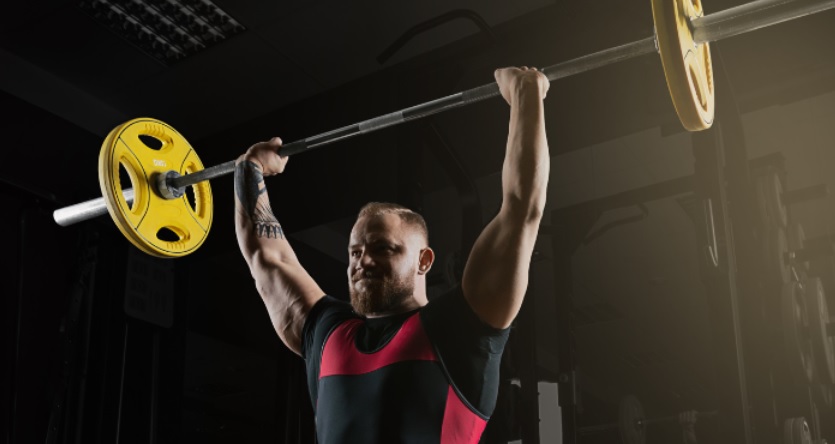
Here are some variations to consider:
Seated Press
- Sit on a bench with support to the back.
- Hold a dumbbell in each hand at shoulder level
- Press the weights overhead until your arms are fully extended, then lower them back to shoulder level. This exercise engages all three deltoid heads.
Standing Dumbbell Shoulder Press
- Similar to the seated version, but performed while standing. This recruits additional core muscles for stability and balance.
Single-Arm Dumbbell Press
- Focus on each shoulder individually by pressing one dumbbell overhead at a time. This can help address strength imbalances between your shoulders.
Lateral muscle Raise
- Lateral raise targets the side deltoids, helping to create width and definition in your shoulders.
Lateral Standing Dumbbell Raise
- Hold a dumbbell in each hand.
- Raise the weights to shoulder level while keeping your arms straight but not locked, then lower them back down.
- Concentrate on maintaining control and avoiding excessive swinging.
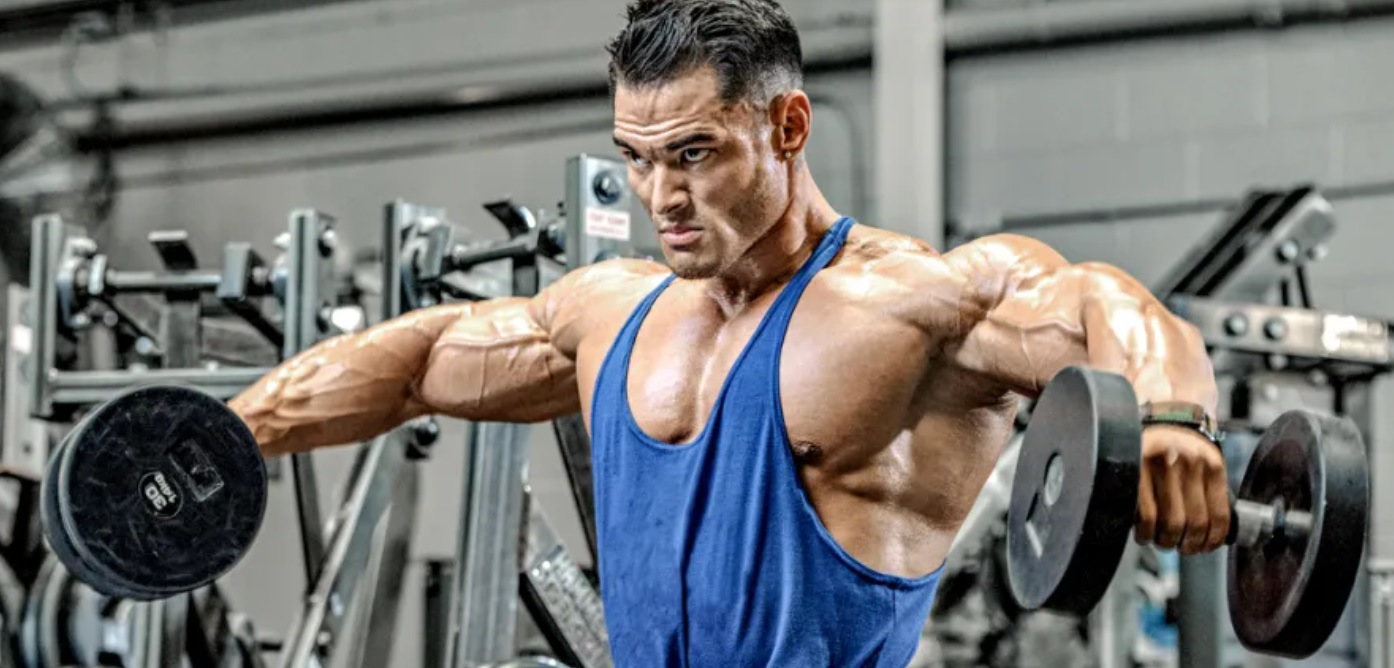
Muscle Raise While Seated
- Sit on a bench with back support or on a chair and complete lateral lifts while seated. This lowers the possibility of cheating by using your lower body for propulsion.
- Front Raises
- Front raises primarily work the front deltoids, contributing to the overall aesthetics of your shoulders.
Standing Dumbbell Front Raise
- Stand with a dumbbell in each hand placed on your thighs. Lift the weights directly in front of you until they reach shoulder level, then lower them back down.
- Keep the elbow slightly bent
- Front Raise on the seated dumbbell
- Similar to the standing version, but performed in a seated position for stability.
Rear Deltoid Exercises
- To ensure balanced shoulder development, it’s essential to target the rear deltoids, which are often neglected. Strong rear deltoids improve posture and help prevent shoulder injuries.
Bent-Over Dumbbell Reverse Flyes
- Bend at your hips to create a 45-degree angle with your upper body while holding a dumbbell in each hand. Raise your arms out to the sides in a fly motion, squeezing your rear deltoids at the top of the movement.
Face Pulls with Dumbbells
- At chest height, attach a resistance band to a reliable anchor point.
- Hold the ends of the band with a neutral grip, step back to create tension, and pull the band toward your face, squeezing your rear deltoids.
- Dumbbell exercises offer a wide range of motion and flexibility, allowing you to tailor your shoulder workout to your specific goals and needs
Barbell Exercises for Shoulders
- Barbell exercises are another excellent way to build shoulder strength and mass.
- They provide stability and can help you lift heavier weights.
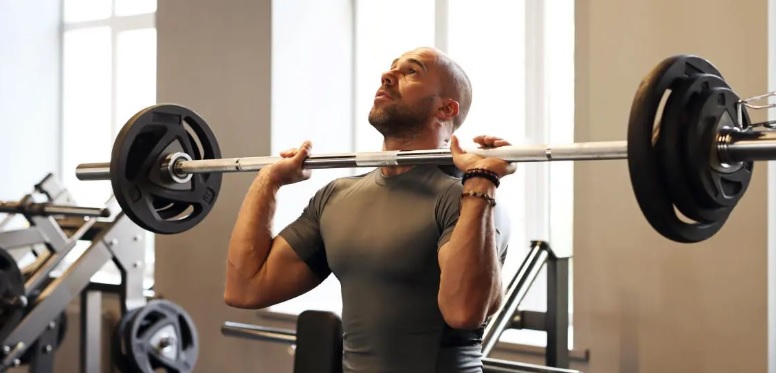
Variations
- Barbell Overhead Press (Military Press): Stand with your feet shoulder-width apart and hold a barbell at shoulder height. Press the barbell overhead until your arms are fully extended, then lower it back to shoulder height. This compound exercise engages all three deltoid heads and the triceps.
- Push Press: Similar to the barbell overhead press but with the addition of using your legs to generate momentum. This allows you to lift heavier weights and targets the front deltoids, triceps, and core.
- Behind-the-Neck Press: This variation involves pressing the barbell behind your neck. However, it can place stress on the shoulder joints and may not be suitable for everyone. Ensure proper form and consider your shoulder health before attempting this exercise.
Upright Rows
- Upright rows primarily target the front and side deltoids, as well as the trapezius muscles. Stand with your feet shoulder-width apart, holding a barbell with an overhand grip, hands closer than shoulder-width apart.
- Lift the barbell toward your chin, keeping it close to your body, and then lower it back down. This exercise helps develop the front deltoids and the upper trapezius.
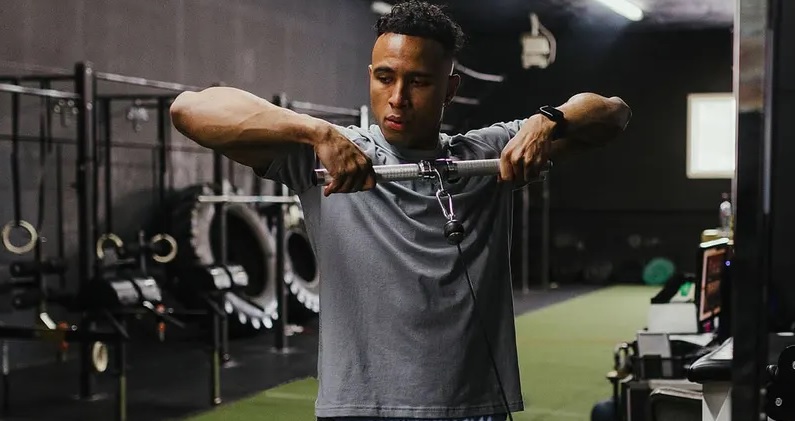
Shrugs
- Hold a barbell with an overhand grip in front of your thighs.
- Lift your shoulders as high as possible while keeping your arms straight, then lower them back down.
- This exercise focuses on the upper trapezius and can be performed with heavy weights.
- Similar to the traditional shrug, but with the barbell held behind your body. This targets the lower trapezius muscles.
Machine and Cable Exercises for Shoulders
Machines and cable equipment in the gym offer a different dimension to your shoulder training. They provide stability and controlled resistance, allowing you to isolate and target specific shoulder muscles effectively.
- Shoulder Press Machine: This machine mimics the motion of a standing or seated shoulder press. It provides a guided range of motion, making it suitable for beginners and those looking to focus on controlled repetitions.
- Lateral Raise Machine: Similar to the standing dumbbell lateral raise, this machine isolates the side deltoids. It helps maintain proper form and provides constant tension throughout the movement.
- Rear Deltoid Flye Machine: Designed to target the rear deltoids, this machine allows you to perform reverse flye motions with controlled resistance, effectively engaging and strengthening the rear deltoids.
- Cable Face Pulls: Attach a rope attachment to a high pulley on a cable machine. Grasp the rope with both hands, step back, and pull the rope towards your face, squeezing your rear deltoids. This exercise is excellent for improving rear deltoid strength and posture.
- Cable Lateral Raises: Use a low pulley attachment and a handle to perform lateral raises. This provides constant resistance throughout the range of motion, helping develop the side deltoids.
Machine exercises offer a controlled environment for targeting specific shoulder muscles and are particularly useful for beginners or individuals looking to isolate and focus on muscle groups.
To achieve well-rounded and strong shoulder muscles, it’s important to follow a structured training program. Here, we present a sample 4-week shoulder training plan and discuss the concept of periodization for long-term shoulder development.
Shoulder Training Plan
Weeks 1-2: Foundation Building
- Day 1: Mass and Strength
- 4 sets of 6–8 repetitions for the standing dumbbell shoulder press
- Sitting Lateral Raises with Dumbbells: 3 sets of 10–12 repetitions
- Reverse Flyes With a Bent-Over Dumbbell: 3 sets of 10–12 reps
- Rest for 2 to 3 minutes in between sets.
- Day 2: Functional fitness
- 3 sets of 12–15 repetitions for pushups
- 3 sets of 30-45 second planks
- Band of resistance 3 sets of 12–15 repetitions on each side for external rotations
- Between sets, take 1-2 minutes to rest.
Focus on Hypertrophy in Weeks 3–4
- Day 1: Definition and Hypertrophy
- 4 sets of 8–10 repetitions on the barbell overhead press
- Front Raises with Standing Dumbbells: 3 sets of 10–12 reps
- Three sets of 12–15 repetitions for cable face pulls
- Rest for 2 to 3 minutes in between sets.
- Day 2: Detail and Isolation
- Bench Press with Dumbbells While Sitting: 4 sets of 6–8 reps
- Lateral Raises
You may repeat and alternate these days on the rest of the weekdays. This program combines strength, hypertrophy, and functional fitness training to target various aspects of shoulder development. The first two weeks lay the foundation with a focus on basic strength and functional movements. In the subsequent two weeks, the program shifts towards hypertrophy and muscle definition with a variety of exercises and rep ranges.









